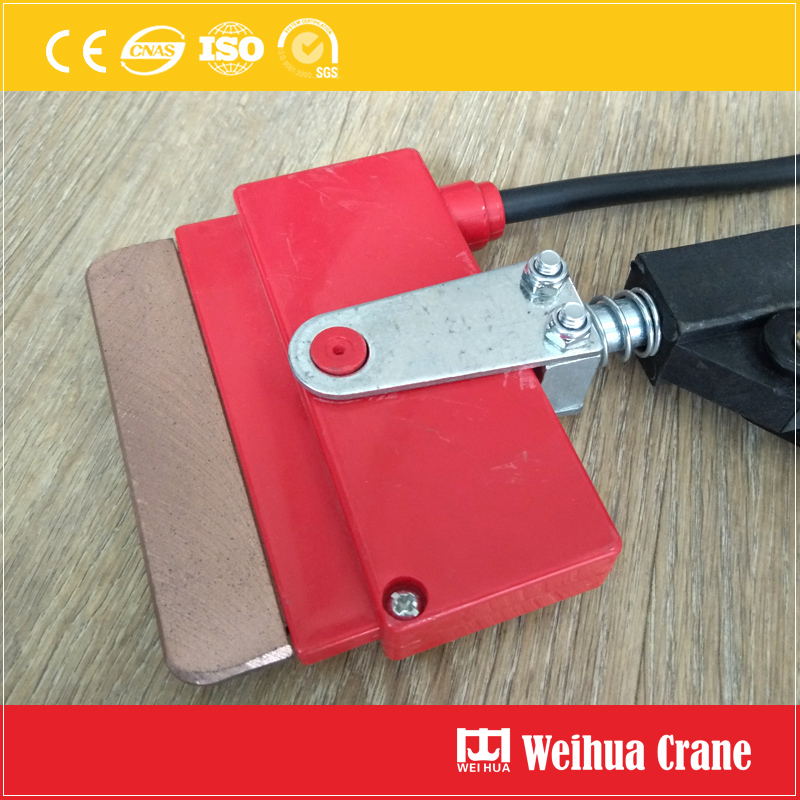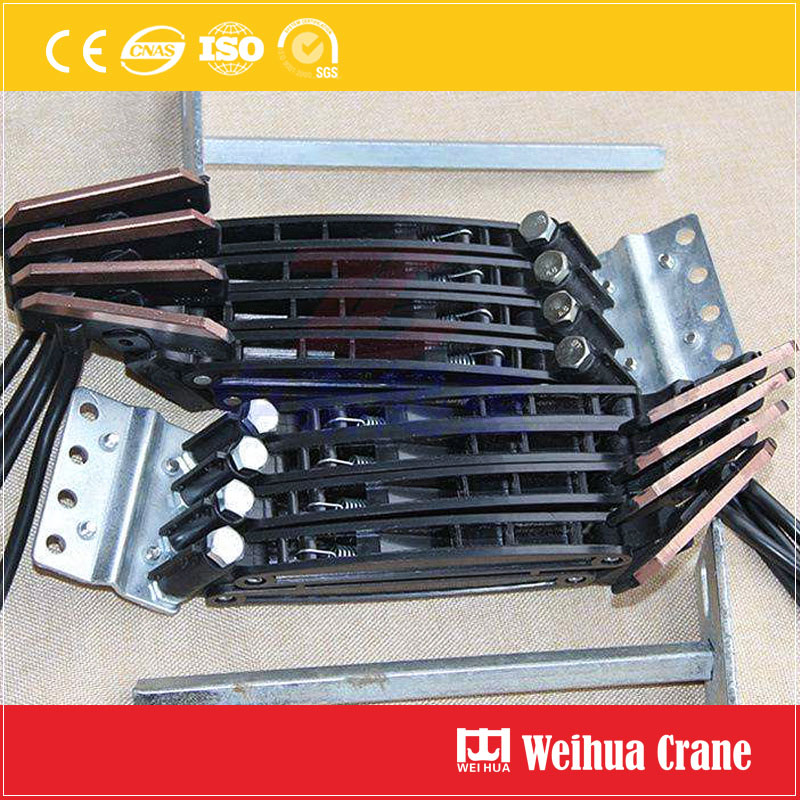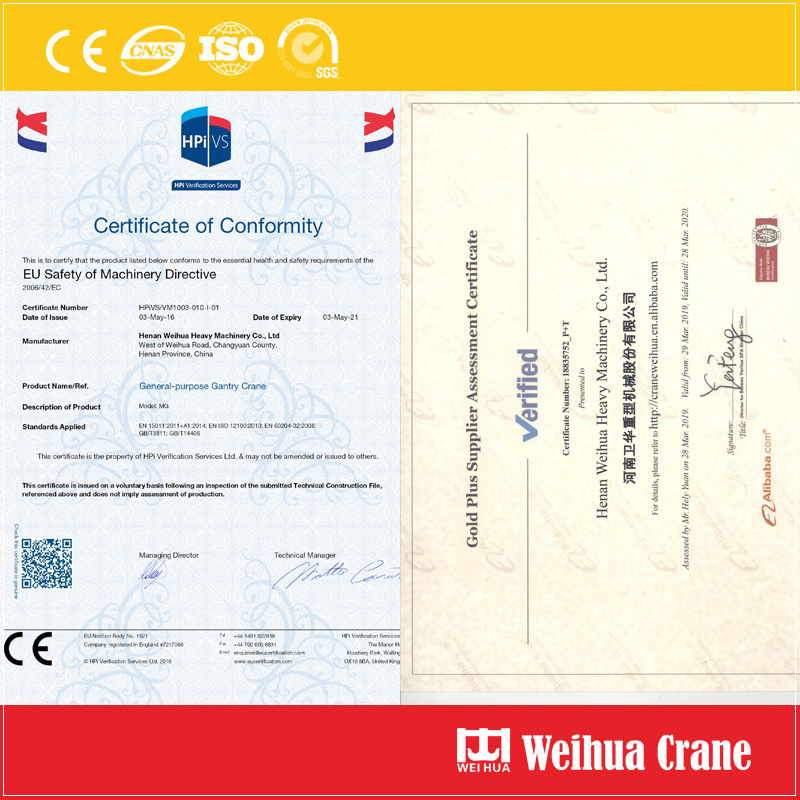在当今快节奏的工业格局中, 起重机操作的效率和安全性完全取决于不间断的电力传输. 起重机集电器成为尖端电力传输解决方案, 旨在弥合固定电源和动态起重机系统之间的差距. 通过提供一致的, 移动起重机的低损耗电流——无论是桥式起重机, 龙门起重机, 吉布起重机, 或集装箱装卸机 - 它消除了由电力波动引起的停机,即使在恶劣的工业环境中也能确保最佳性能. 设计注重可靠性, 长寿, 和以用户为中心, 该组件不仅仅是起重机系统的一部分, 而是无缝物料搬运操作的基石.


|
范围
|
规格
|
|---|---|
|
额定电压
|
交流380V/400V/415V, 直流220V/440V (可自定义)
|
|
额定电流
|
100A, 200A, 300A, 400A, 630A (可自定义)
|
|
极数
|
3磷, 3P+N, 3P+N+PE (可自定义)
|
|
接触材料
|
高纯铜, 镀银铜, 铜合金
|
|
外壳材料
|
铝合金, 增强工程塑料 (PA66+GF)
|
|
工作温度范围
|
-40°C 至 80°C
|
|
防护等级
|
IP54/IP65 (选修的)
|
|
最大行驶速度
|
120米/分钟
|

起重机受电器广泛应用于起重机运动过程中需要可靠供电的各种工业场景. 主要应用领域包括:

结束 20 多年电气元件制造经验, 我们致力于提供高品质, 具有成本效益的电力传输解决方案. 我们的起重机集电器经过严格的测试 (包括耐久性测试, 温度循环测试, 和振动测试) 确保恶劣条件下的一致性能. 我们还提供定制解决方案以满足特定客户的要求, 以及专业的技术支持和售后服务.
投资我们的起重机集电器以提高可靠性, 效率, 和起重机操作的安全. 请立即联系我们了解更多信息或索取报价!
以下是有关起重机集电器的最常见问题, 旨在解决共同关心的问题并提供明确的, 为工业和物料搬运领域的用户提供实用的答案.
Q1: 起重机受电器的主要作用是什么?
A1: 起重机集电器是一种关键的电气元件,它将电力从固定的导电轨传输到移动的起重机. 其核心功能是维持稳定, 电源和起重机电机之间的低电阻电气连接, 控制系统, 以及起重机水平或垂直运动过程中的其他电气部件. 这确保了连续, 可靠的电源支持无缝起重机操作, 比如举重, 降低, 和横移负载.
Q2: 如何为我的应用选择合适的起重机集电器?
A2: 选择取决于几个关键因素: – 额定电流 & 电压: 使集电器的额定电流/电压与起重机的电气要求相匹配 (例如, 200A 适用于中型起重机, 630A 适用于重型起重机). – 极数: 根据电源系统配置选择 (例如, 3P代表三相电源, 3P+N+PE 适用于需要中性线和保护性接地的系统). – 运行环境: 适用于恶劣条件 (高温, 灰尘, 腐蚀), 选择具有 IP65 防护等级和耐磨涂层的型号. 适合户外使用, 选择防风雨的住房. – 起重机速度: 确保收集器能够处理起重机的最大行驶速度 (标准型号通常高达 120m/min). – 导电轨兼容性: 验证集电器的触点设计是否与导电轨类型匹配 (例如, T型, C型, 或I型导轨) 在您的设置中使用.
Q3: 起重机集电器产生电弧的原因, 以及如何预防?
A3: 产生电弧通常是由于集电器与导电轨接触不良造成的, 这可以源于: – 接触压力不足 (弹簧磨损或未对准). – 接触面被污染 (灰尘, 油, 或氧化). – 起重机加速/减速过大. – 接触块磨损或损坏. 预防措施: 定期检查和清洁接触面; 及时更换磨损的弹簧或接触块; 确保安装过程中正确对齐; 并避免起重机操作中的突然速度变化.
Q4: 我应该多久维护一次起重机集电器?
A4: 维护频率取决于使用强度和操作环境: – 轻型 (室内的, 干净的环境): 每 3-6 个月检查一次. – 中型 (常规工业用途): 每 1-3 个月检查一次. - 重负 (恶劣的条件: 灰尘, 水分, 高负载): 每月检查一次. 主要维护任务包括: 用干布或专用清洁剂清洁接触表面; 检查接触块磨损情况 (当磨损超过时更换 30% 原始厚度); 润滑导辊; 并验证弹簧张力和外壳完整性.
Q5: 起重机集电器可以在室外或腐蚀性环境中使用吗?
A5: 是的, 但您需要选择专为此类条件设计的型号. 寻找收藏家: – 耐腐蚀材料: 外壳采用带防腐涂层的铝合金或增强工程塑料制成 (PA66+GF). – 高防护等级: IP65或更高,防止灰尘和水进入. – 耐磨触点: 镀银或镀镍铜触点可抗氧化和腐蚀. 这些型号适用于港口集装箱码头等户外应用, 建筑工地, 和矿区.
Q6: 吊车集电器安装难吗?
A6: No, 大多数起重机集电器具有模块化, 人性化设计,安装方便. 该过程一般涉及: 1. 将收集器支架安装到起重机的移动小车上 (确保与导电轨对齐). 2. 将采集器的电缆连接到起重机的电源输入端子 (按照接线图). 3. 调整接触压力和对准,确保与导轨顺利接触. 建议遵循制造商的安装手册或咨询专业电工进行复杂的设置, 但基本安装可由现场维护团队使用标准工具完成.
Q7: 起重机受电器突然失效怎么办?
A7: 第一的, 立即停止起重机作业,确保安全. 然后, 执行以下故障排除步骤: – 检查电缆是否松动或断开 (必要时重新连接). – 检查接触块是否磨损, 损害, 或污染 (根据需要清洁或更换). – 验证弹簧张力 (如果弹簧变弱或损坏,请更换弹簧). – 检查集电器和导电轨之间是否未对准 (调整支架). 如果问题仍然存在, 联系制造商的技术支持团队并提供有关故障的详细信息 (例如, 症状, 操作条件) 如需进一步帮助. 避免强迫起重机在有故障的收集器上运行, 因为这可能会损坏起重机的电气系统.
以 PDF 形式分享: 下载



我们重视您的反馈! 请填写下面的表格,以便我们根据您的具体需求定制我们的服务.

最新评论